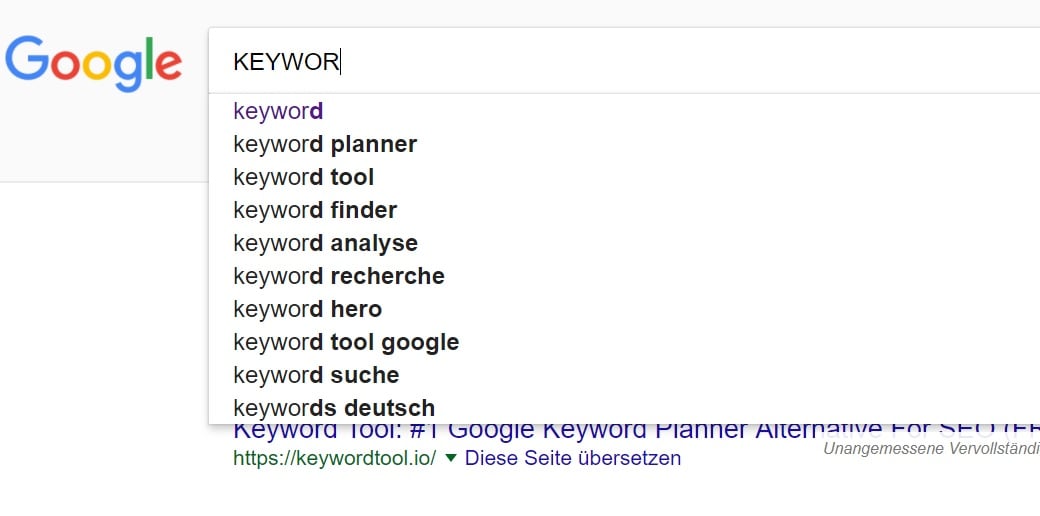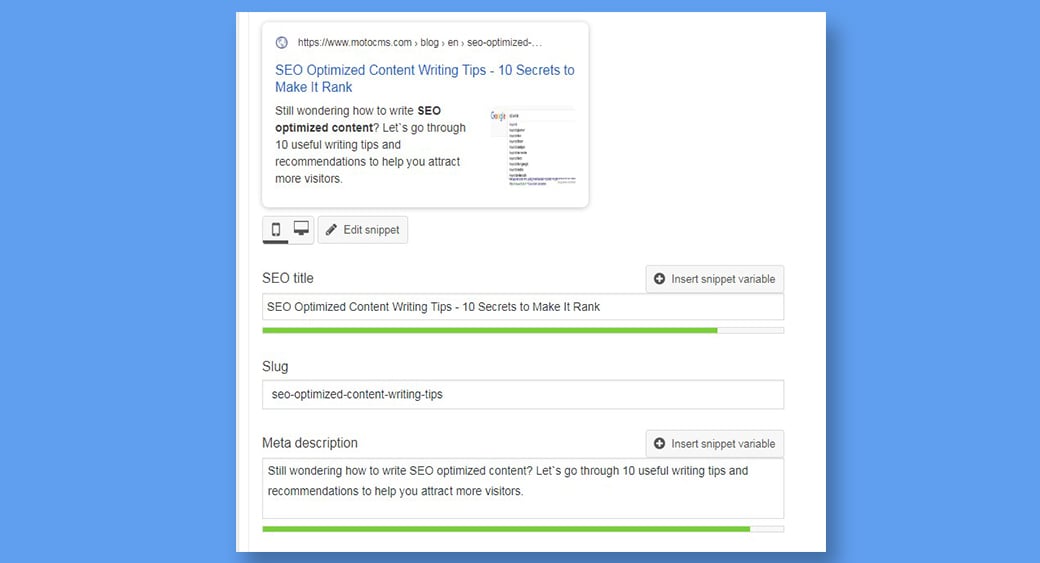SEO Optimized Content Writing Tips – 9 Secrets to Make It Rank
What is SEO-optimized content writing? Let’s make it clear: it is not enough to write good content. It should be unique, compelling, and optimized in an equal manner.

Here you see what is going on in the digital marketing space. Some webpages appear on the main result page in Google, while others are pulling up the rear. In a nutshell, digital marketers need to convince the search engines that their web pages are worth being ranked high. A bunch of shares, clicks, and likes drives stable traffic and more robust audience engagement. The content should be optimized under these needs.
Seo-friendly content is not just about spraying the keywords around any form of content (which often comes to mind first when considering SEO optimization). In reality, this is a far more comprehensive process that takes time. SEO optimized content writing is created in a specific way that helps search engines rank it high, but only if done correctly. So, how to step on this right way and make your content work on your side? Here are some secrets on how to start writing SEO optimized content.
1. Keywords Are Key Elements

Keywords are words or any combinations of words that users type into search engines when looking for needed information. Have you ever thought, especially when scrolling the Web aiming to find something on a particular topic, that you probably won’t use long phrases or complicated sentences? Most likely, you will type a few words or a combination of related words into a search engine, so the system can “understand” what you are looking for and find relevant content to your needs. For example, if you need your essay to be done in the shortest time, that would be enough to insert three words, let’s say “write my essay,” so the list with the needed services will appear on the results page.
Keywords Are not for Overuse
Remember that your keywords should ideally match the intent of your content. In other cases, they might spoil the reader’s experience. Align your keywords with the user expectations and intentions, but do not overwhelm them with a vain bulk of keywords. They need to be inserted naturally without irritation.
Add Keywords Wisely for SEO-Optimized Content Writing
Consider the keyword implementation as a helpful supplement to your content, but not as the primary goal. Feel free to spread them throughout the body of your texts and within the headers. Note that the keywords should not grab the total users’ attention as it’s not what you should focus on at first. You need to make your content matter and then incorporate your keywords. If you need to drive more traffic to your website through writing effective blog posts, there are certain places where the keywords would be the most appropriate. Try to include at least one or a few keywords in:
- title tag – this can be the title of an article, blog post, guidelines, etc.;
- h1, h2, h3 tags – the subtitles or headers of your text;
- the first paragraphs – as these catch users’ attention at a glance, making the general idea of the content clear;
- an anchor text – the piece of writing with a clickable link to another webpage;
- an image description – insert keywords in the file name while uploading a picture;
- Tags and meta description… and here we’ll go more in-depth.
Note: URLs also need optimization. They are among the first things that help search engines identify what your content is.
2. Power of Tags and Meta Description

The meta description is a brief excerpt below the headline on the search engine result page. With the help of a short description, the user can understand a lot, even without opening a page. However, most search engines allow no more than 160 words for the report, so try to include a couple of targeted keywords there.
Note: everything strives for diversity; keywords are not an exception. Forget about the exact repeated keywords. Even if you have few keywords, you can always find synonyms or replace them with semantic words.
3. Make the Headlines Strong
Think of what grabs your attention when you see a headline for the first time. Is it a number, name, or maybe, a date? Try to find the proper keyword to add to your headline. It will become much easier for users to understand what to expect further. The headline is around 90 % of why anyone will continue reading your copy. It’s fundamental to create something that will drive curiosity, be catchy, and be breathtaking to pull readers in immediately.
4. Content Always Comes First
Start with good structure, review the needed paragraphs, and visualize them on a webpage – are they well written and organized now? You can break it down into smaller pieces using a precise heading for each paragraph if it’s a long-read article. People often prefer to scan the text, especially in a hurry, so bullet points or a numerous list are of great help here as well.
The content is and will remain the most potent means on the Internet. Whether you’re trying to sell your old violin or promote a company website, the way the content is written determines the users’ reaction and affects their attitude to your products/ services, etc. For professional SEO-optimized content writing, it is a must to be meaningful, helpful, and compelling. It should be simple to read, easy to understand and create value for most people. Applying search optimization techniques allows your content to be understood by Google and other search engine systems.
Leap Beyond Good Content – Make It Genuine
The point is, before being genuine – be understood. To create SEO optimized content writing that ranks, make it as readable as possible. The more time readers spend on your page and read, the more it attracts Google. Such a high level of readability ensures longer dwell time (the amount of time between the moment you click a search result and subsequently return to the SERPs). In turn, long dwell time means the high relevance of your web page.
5. Visualize More

Imagery has the power to support and help your SEO optimized content writing thrive. However, insert an image alt and description to get real benefits from adding images. Search engines recognize them through alt text length only. When the pictures are “seen,” they can be ranked.
According to research, adding engaging images to your articles guarantees 94% more views than those without. No chance to deny our physiological nature: people perceive data more easily through visual elements.
6. Use Internal Links
Internal linking is good practice to send authority or point to other pages on the same domain. It increases the chances for visitors to become more familiar with your content. They might stay longer on your site and get important info. For example, you can include a hyperlink in your new article that points to an older one. By doing so, you are accomplishing both goals simultaneously: remind readers of your previous content, make their experience more diverse, and receive higher rankings in Google.
7. Track Analytics

Start with selecting the right tracking tools to monitor Google Analytics regularly. Using various digital instruments for SEO optimized content writing, you can watch users’ time on your site or track the bounce rate. Such tools help check how well your content is optimized or whether it has enough targeted keywords. With in-depth analysis, it becomes easier to figure out what causes a lower bounce rate, or vice versa, what keeps readers engaged and makes them stay longer on a page.
8. Make Your Key Message Clear and Get Right to the Point
Keep in mind the clear objective, always. Whether it’s long-read blog posts ( 2000+ words), a how-to guide, or simply a 400-word short article, everyone needs to make sense at the end and clearly understand your content’s message.
If your writing consists of, let’s say, 70% senseless information out of the topic, the chances the user will spend time on your page might be reduced. Go deeper and do research, provide statistics, expert opinion or any other supporting data related to your topic, but be careful not to cross the borders.
9. Update and Reuse
The more your content remains relevant, the higher the value it will deliver. All the topics you’ve written need to be rewarding in the long run. In turn, such types of content guarantee steady traffic and help generate more leads. To improve your SEO optimized content writing, you can regularly update already existing content instead of generating new content pieces over and over again. It will take less time and less effort to repurpose whenever needed while grabbing the benefits immediately.
Let’s look at what lies opposite to professional SEO-optimized content writing. Here’s a short reminder to keep in mind. You are definitely in the wrong direction if you:
- neglect proper meta description that contains targeted keywords;
- try to highlight keywords that have nothing in common with your content;
- overuse the same words or repeat them again and again;
- duplicate content web pages;
- write long paragraphs (or sentences) without breaking them down into smaller ones;
- create content from scratch each time;
or if you:
- do not embed images or other visual objects;
- do not create unique and original content;
- do not focus on key message;
- do not include internal and external links;
- do not follow proper structure;
- do not update your texts
SEO Optimized Content – Summing It Up
Still wondering how to write SEO optimized content? Be ready to apply these techniques to your SEO optimized content writing strategy. Before doing so, bear in mind that everything should sound natural. Always put the reader first, and then use SEO tricks to create the perfect content. You will attract more visitors, drive much more traffic and compete for search engine rankings easily.




Leave a Reply